Oscar Wilde’s The Picture of Dorian Gray had always been and never ceases to be an obsession of mine. I have no idea what was it that the fifteen-year-old me found in such a novel, and what was it that made her decide to watch the 2009 film adaptation, but I shall be forever grateful for that.
I an even able to recite the opening line to the novel from memory, complete with the correct punctuation at times.
Now, as a twenty-one-year-old with almost three years of experience as an English major in university, and having gained fresh new perspectives on novels, traditions and adaptations, I decided that I would take a second look at the film after I felt satisfied with my essays due for submission this week.
I cannot be happier for the decision to re-watch the film that so scarred the fifteen-year-old me gave me so many new ideas and insights, especially since I am aware that the film received quite a fair bit of negative reviews.
In this post, I shall present my defence of the 2009 adaptation, along with some of my own analysis of the film.
This post is NOT SPOILER FREE.
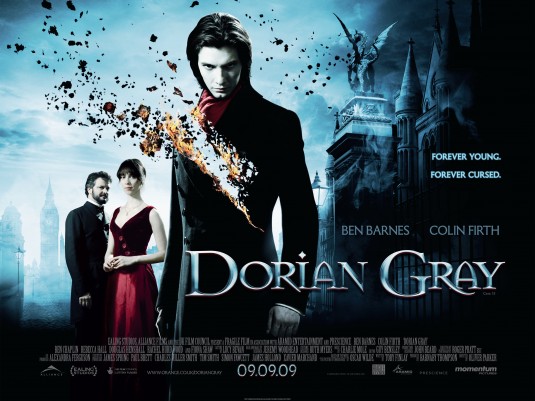
The first thing that I found was that as different as the film was from the original novel, every change was made with the deliberate intent to make it look as shocking to the 21st century audience as the novel was to the 19th century Victorian audience. The gratuitous sex, bondage and nudity shown in the film, and Dorian’s obsession with all kinds of sex and deviant sexual encounters ruffled a few feathers among readers of the book, who claimed that the other kinds of sins Dorian indulged in were left in the dark. Against this complaint, I would like to reiterate that the 2009 film was made to shock the 21st century audience at the fall of the once likeable Dorian Gray, and the most efficient way to do so was through sex and sex related vices. Also, in the book, Dorian’s sins were not made clear; we are only told that he has sunk deep into a world of vice and sin, but we are not told exactly what they were.
The film also cemented the theories of many Oscar Wilde academics who claimed that The Picture of Dorian Gray carried notes of homoeroticism and homosexuality; there is a kiss between Dorian and Basil, and another scene where Dorian engages in sexual acts with another man.
Oscar Wilde, as far as I know him, would have certainly included these and such scenes if he was living in today’s era. The film felt, to me, what Wilde’s novel would have been like in this century. The Picture of Dorian Gray shocked the Victorian audience, with its apparently flippant attitude towards sin and morality, as manifested in the character of Henry Wotton. The kind of things the film has been criticised for, such as the emphasis on the sexual nature of Dorian’s sins, the graphi murder scene, and the homosexuality, is exactly the very elements I feel Wilde would have most certainly included in his original novel if he knew it would have been safe for him to do so. Therefore what the film is in essence, is a 21st century appropriation and revamping of the original novel.
Next, I thought the film brought new perspective into the relationship between Henry Wotton and Dorian Gray. While the former in the book served the function of the ‘whisperer’, putting amoral ideas into Dorian’s head without taking any action himself, the film made the relationship seem to take more of a ‘sculptor-sculpted’ angle. As much as Basil Hallward creates the titular painting of Dorian Gray, the role of the creator falls more onto the shoulders of Henry Wotton instead. Henry Wotton creates the sinful Dorian Gray as much as Basil creates the painting of Dorian, and this is stated explicitly in the film when Dorian claims that he is living the life Henry never dared to. Yes, this is present in the novel too, but the film makes this relationship dynamic all the more prominent. When Henry Wotton says that Dorian is “against nature”, he reminded me of how Victor Frankenstein sees the creature he has created as an abomination against nature. Towards the end of the film, Henry becomes increasingly disturbed and shocked at Dorian’s transformation and their confrontation in the attic, and Henry’s role in Dorian’s demise, carries echoes of Mary Shelley’s text.
The film also portrays Dorian Gray in a more sympathetic light than he was in the novel, mostly propelled by his relationship with Sibyl Vane, his first love interest, and Emily Wotton, his second. Upon hearing the news of Sibyl’s death, Dorian is visibly anguished and drowns in grief and seems to be unable to come to terms with it before Henry Wotton comes in again, with his amoral philosophy. Although we, as the audience, are forced to see the atrocities committed by Dorian in the film, as compared to the novel in which we only hear but not see his sins, we cannot help but feel pity for him as he collapses in Emily Wotton’s arms after making a vow to change his ways towards the end of the film. Dorian’s road to redemption was also paved by his memories of Sibyl Vane, and his acknowledgement of the role he played in her demise, which causes him to genuinely regret everything he had done, and take the steps towards becoming a better man. Emily Wotton, a character created for the film, holds the possibility of a good future for Dorian, a promise of hope for his new self. This then causes the audience to feel more sympathy for Dorian, in spite of all the sins he might have committed right in front of our eyes, and regret the impending end (if we had read the novel prior to watching the film).
It is in this strange realisation that I feel, that the magic of the film lies.
Finally, I shall comment on the fact the film deviates greatly from the book. I will have to admit that a few, significant changes have been made, but the overall plot of the tale has been maintained. What Oliver Parker had done in his contemporary adaptation of the classic novel, was t0 repackage the familiar tale into a Gothic horror convention, taking under his arms, iconic elements of the Gothic horror tradition, and Freudian psychological theories of the uncanny. First, the film opens with the murder, complete with blood, and violence and carried out in the dark, instantly fitting it into the expectations of a Gothic horror film. The portrait was also made to look as grotesque as possibly, together with the presence of flies and maggots, and even made to look alive with movements and unsettling breathing noises, which easily causes it to become an uncanny object, as associated with horror films.
The novel, in my opinion, is a psychological thriller-philosphical take on duality and art, while the film fits easily into the genre of Gothic horror.
(Here are some screen shots from the film that made me realise that it was definitely following the Gothic horror tradition)
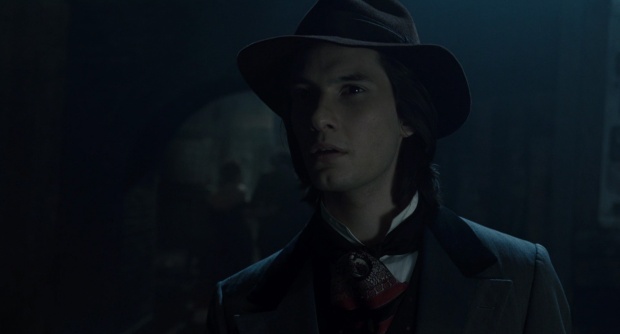
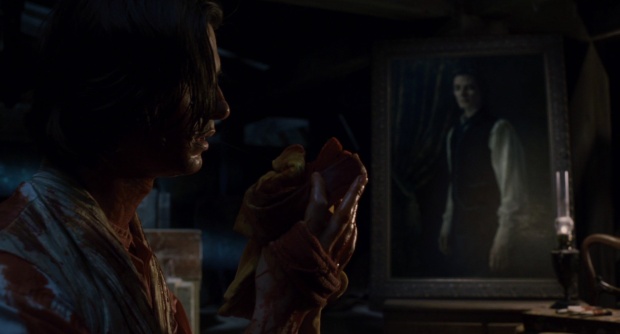
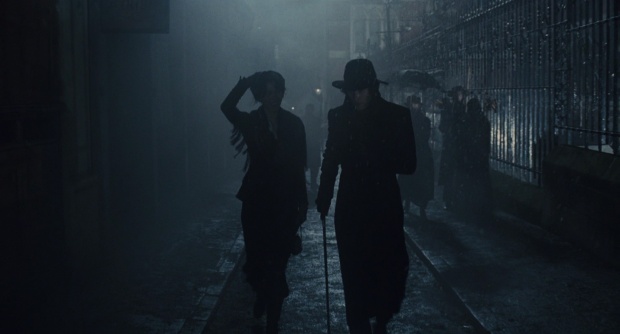
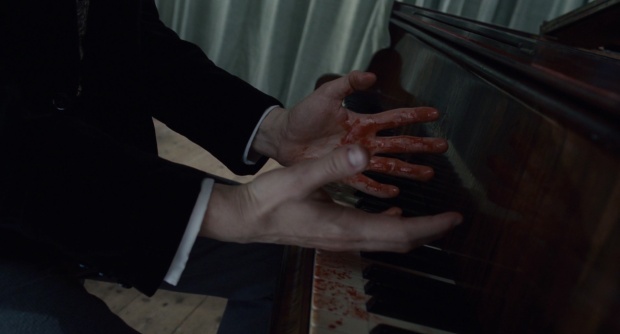
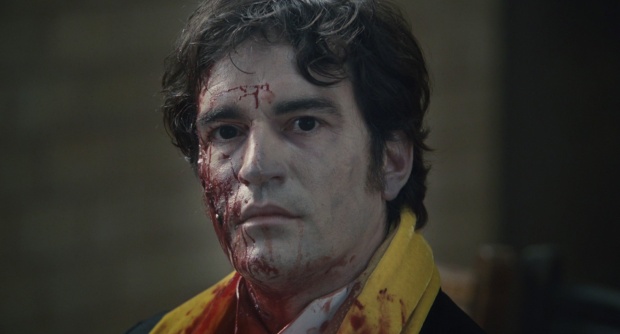
What Oliver Parker had done in his contemporary adaptation of the classic novel, was t0 repackage the familiar tale into a Gothic horror convention, taking under his arms, iconic elements of the Gothic horror tradition, and Freudian psychological theories of the uncanny. First, the film opens with the murder, complete with blood, and violence and carried out in the dark, instantly fitting it into the expectations of a Gothic horror film. The portrait was also made to look as grotesque as possibly, together with the presence of flies and maggots, and even made to look alive with movements and unsettling breathing noises, which easily causes it to become an uncanny object, as associated with horror films. With a fetishized treatment of Victorian English iconography, and the inclusion of blood, gore, supernatural elements, psychological elements, and gratuitous sex scenes, Dorian Gray is in essence, a delightfully made Gothic horror film.
So, to all those who refuse to admit that this is actually a good film, you need to watch it again, and with the realisation that the novel is in the public domain, and that adaptations are, more often than not, interpretations of novels and source materials by the artist.